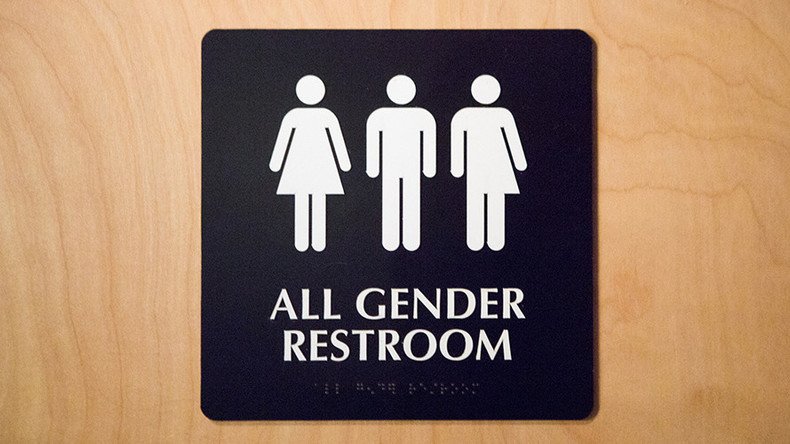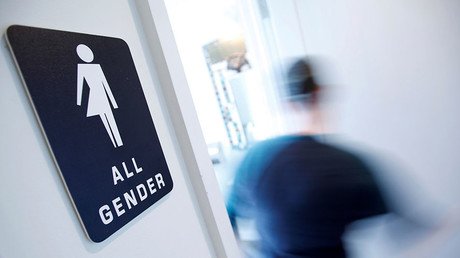Boys, girls &… RT investigates gender dilemma dividing schools, parents & kids in Britain

As schools introduce gender-neutral toilets and uniforms, parents sue over a boy in a skirt and the government considers removing ‘male’ and ‘female’ from official forms, gender has become a contentious issue in modern Britain.
Increasing numbers of young Brits are expressing doubt about their gender identities. When the Gender Identity Development Service (GIDS) at London’s Tavistock Clinic opened in 1989, it received two referrals. Last year, 1,400 children under 18 were referred there – double the number of the year before. Nearly 300 were under the age of 12, with some as young as three years old.
Schools are on the frontline of a fierce and polarized debate. This week a Christian couple threatened to sue a Church of England primary school because it allowed a boy in their son’s class to wear a dress.
A handful of schools, facing backlash from some parents, are opting to make their bathrooms and uniforms gender neutral to accommodate transgender students. Others are seeking training on gender issues, holding courses in non-gendered biology and creating unisex safe spaces.
Stephanie Davies-Arai, who founded the Transgender Trend website, a group for parents who “question the trans narrative,” says policies which “pretend there are no biological differences between boys and girls” are “harmful.”
“Toilets are not ‘gender-neutral’, but ‘sex-segregated’ for the privacy and dignity of both sexes. For adults to teach children that girls can be born in the body of a boy is obviously confusing and upsetting for children, because it is not true,” she told RT.
Davies-Arai believes it is “ridiculous and cruel” to suggest children can be transgender.
“Telling a child they are ‘transgender’ sets them on a path of fear of puberty followed by puberty blockers, cross-sex hormones which will sterilize them, possible surgery and a lifetime of medication. We have never done this to children before. We have no idea of the long-term effects.”
Children should be given the space to develop their personalities without labels, Davies-Arai says.
“We should not be telling any child that they are really the opposite sex, but allowing them to express themselves without getting bullied for not conforming.”
Dr. Joanna Williams, a university lecturer and author of the book ‘Women vs Feminism’, says the "war on gender" is bad for children. She believes schools are sowing confusion in children’s minds and forcing them to unlearn the difference between boys and girls.
“Formally presenting a gender-neutral uniform suggests to children that gender is inherently problematic – something toxic which needs to be, quite literally, neutralized,”she says.
“In the case of the trousers-for-all policy, it is the feminine that is eliminated. Instead of giving children more choice, girls are told that wearing a skirt, choosing to dress like a woman, is not acceptable.”
She says the “blank state of grey neutrality” forces children to see gender as “complicated and problematic.”
“Rather than encouraging children to take delight in who they are or revel in pushing the boundaries of what is considered acceptable for men and women … they need to spend time working out how they feel about gender.”
The CEO of Mermaids UK, Susie Green, a charity which supports gender diverse and trans children and their families, says transgender people are the most “marginalized, isolated and prejudiced group in the populace.” She says gender-neutral policies in schools help take away some of the stigma.
“Why victimize somebody who is probably being victimized a lot in their own lives already? They are having to explain who they are, insist who they are, questioned constantly, their families questioned constantly,” she told RT.
“Bringing in gender-neutral uniforms, toilets, some of that takes the stigma away, and helps somebody at the beginning stages of thinking ‘I have to do this.’
“Whether people are in the minority or not shouldn’t mean their views and their wellbeing is dismissed just because there is not many of them … We know what happens when you make them feel bad about who they are – you get mental illness, depression, anxiety, self-loathing,” she adds.
Green, who has a transgender daughter, says children are clear about their gender identity from a very young age.
“What they are coming to terms with is the fact they are different to [most people], which is really, really tough. That doesn’t mean they are confused about who they are, it just means they are in a society that keeps telling them they are wrong.”
The internet, more open discussion and transgender celebrities talking about their experiences have helped to open up space for greater understanding and awareness, Green says.
“Trans people have been part of our society, our culture, for centuries. It is not a new thing. It is not a trend. It is not a mental health issue. It is just becoming more talked about – and children are being listened to.”
Green questions why people are “so determined” to tell parents of transgender children how to bring them up.
“What difference does it make to them whether somebody is transgender, gender fluid, or just likes dressing up in dresses? All they have to say to their children is ‘some people are different.’ It shouldn’t be a big deal,” she says.















